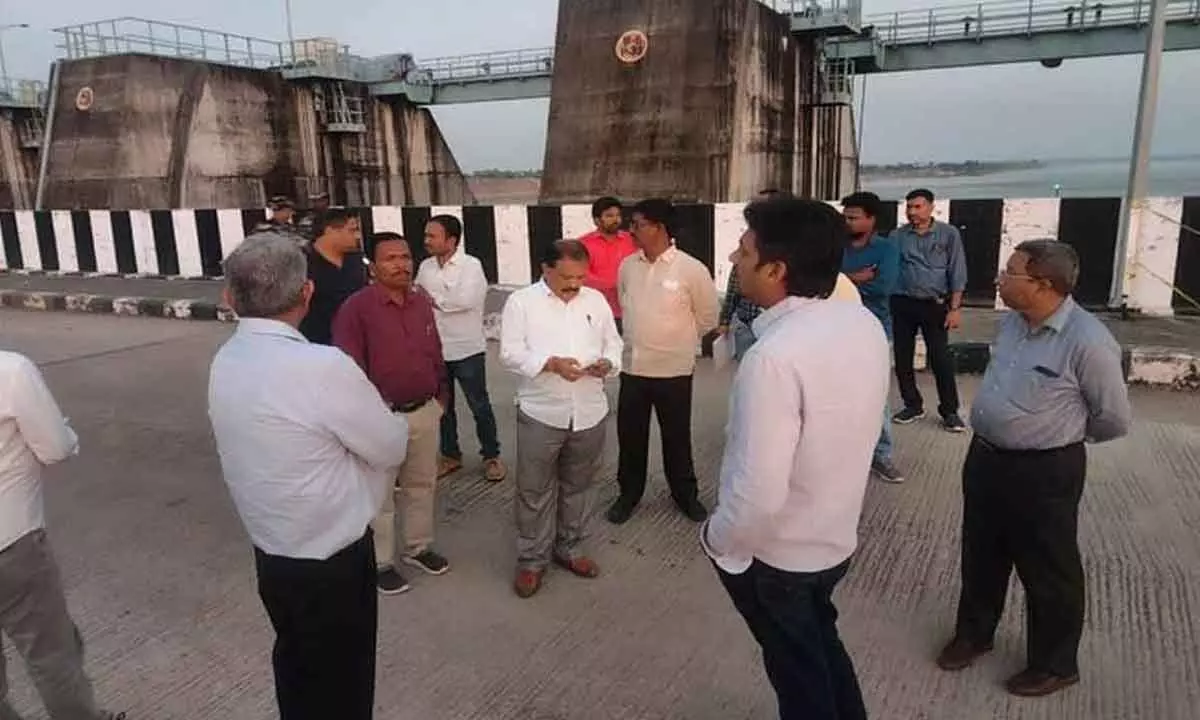Medigadda ‘useless’

Central panel finds design, construction, O&M lapses
- Barrage useless till it is fully rehabilitated: NDSA
- Says detailed investigationof other projects must
- TS govt failed to comply with NDSA rules & regulations
- Dam safety team warns of more damage to Kaleshwaram
Hyderabad: A Central panel on dam safety on Friday ripped into the Telangana government on the issue of the sinking of pillars of the Medigadda (Lakshmi) Barrage, which diverts rather than stores water sank into the Godavari River last month.
The National Dam Safety Authority (NDSA) report said the incident had made the structure ‘useless, unless fully rehabilitiated’. The barrage is part of the Kaleshwaram, the flagship project of the state government costing Rs 80,000 crore and is touted to be the world’s largest lift irrigation scheme.
NDSA chairman Sanjay Kumar Sibbal, in his letter to Telangana State Special Chief Secretary (Irrigation) Dr Rajat Kumar said that according to the committee findings, piers had sunk due to a combination of issues involving planning, design, quality control and operation and maintenance (0&M).
The primary reason for the failure is the settlement of the barrage raft. The piers, being monolith with it, have also settled, moved and cracked. This could occur due to several reasons, viz, piping, wherein transportation of foundation material has occurred; inadequate bearing capacity of foundation material (sand), failure of upstream secant piles due to barrage load. There appears to be construction deficiency due to a lack of stringent quality control during the construction of sub-surface contiguous secant piles and plinth connection between the raft and cut-offs, it said.
The 43-page report further said that the gaps might have been created in the scant pile formation, making the barrier permeable, leading to piping and subsequent progressive failure. There are deficiencies in the project planning & design as well, it said.
The barrage has been designed as a floating structure but constructed as a rigid structure. The contiguous secant pile type cut-offs adopted by the project authorities were taken up to rock both upstream and downstream of the barrage. This has changed the structure behaviour from the design, it said.
The report also found fault with the construction methodology adopted for transverse cut-offs has imposed different conditions than what was assumed in the design.
The alignment of the flared-out wall provided upstream of the barrage making it hydraulic deficient.
The NDSA felt that the dam managers had not inspected or maintained the cement concrete blocks or launching aprons since the commissioning of the barrage in 2019-20. The maintenance deficiency has progressively weakened the barrage, leading to its failure.
This is a significant lapse on the operation and maintenance front, it added.
The report said the NDSA had regularly asked the Telangana State Dam Safety Organisation to get pre and post-monsoon inspections done to check for any unusual behaviour or signs of distress but this was not done, it added.














